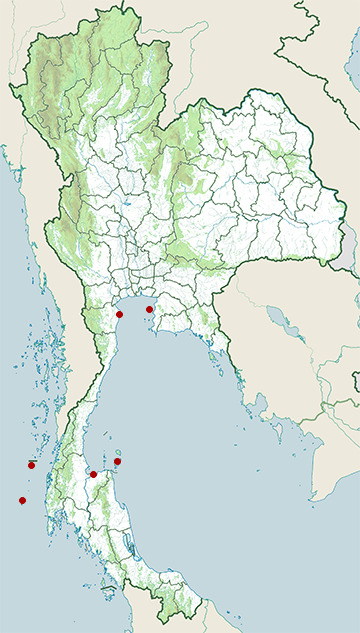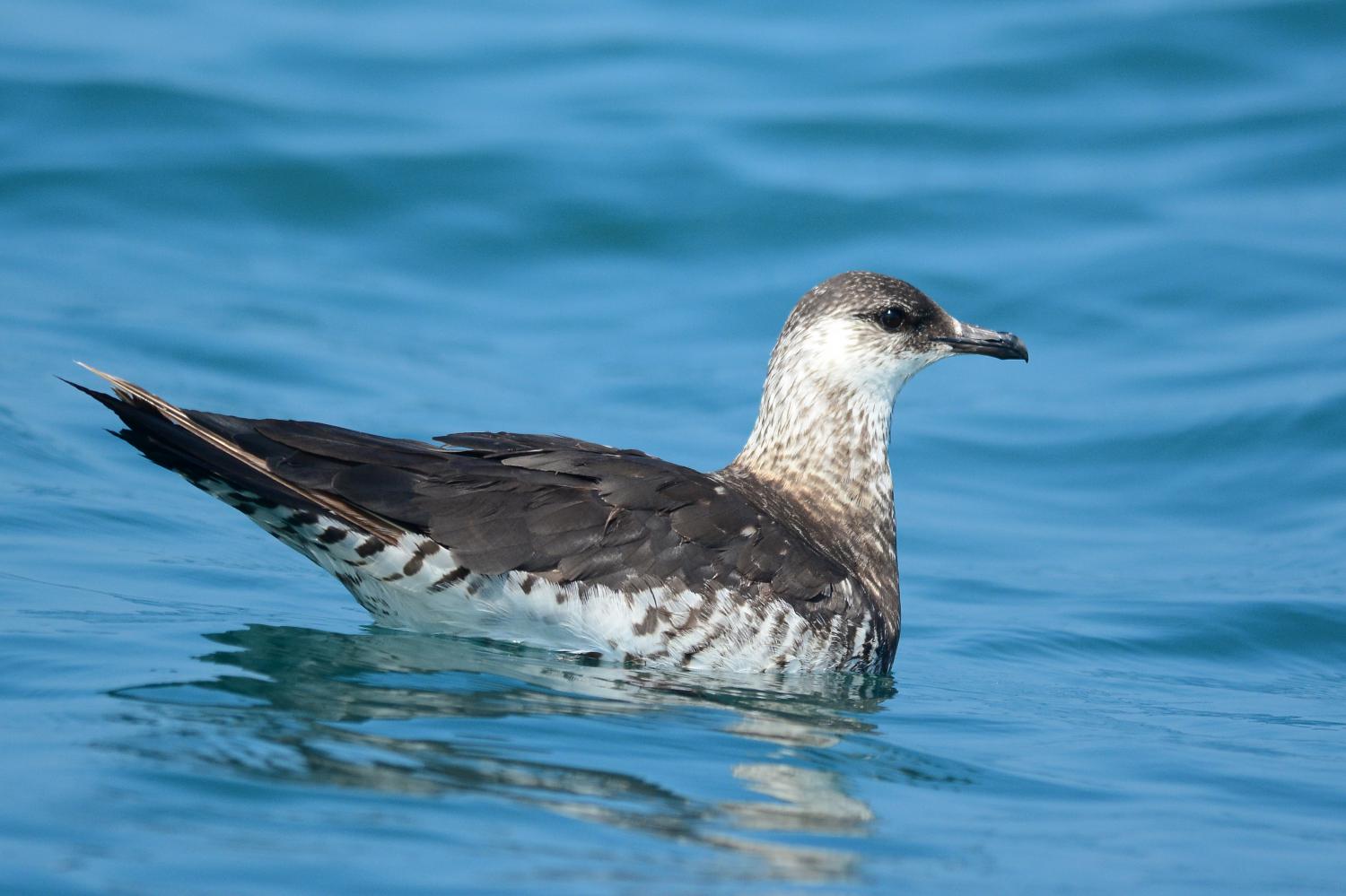Species of Thailand
Parasitic jaeger
Stercorarius parasiticus
Carolus Linnaeus, 1758
In Thai: นกสกัวขั้วโลกเหนือ
The parasitic jaeger (Stercorarius parasiticus), also known as the Arctic skua, Arctic jaeger or parasitic skua, is a seabird in the skua family Stercorariidae. The word "jaeger" is derived from the German word Jäger, meaning "hunter". The English "skua" comes from the Faroese name skúgvur for the great skua, with the island of Skúvoy known for its colony of that bird. The general Faroese term for skuas is kjógvi . The genus name Stercorarius is Latin and means "of dung"; the food disgorged by other birds when pursued by skuas was once thought to be excrement. The specific parasiticus is from Latin and means "parasitic".
Description
Identification is complicated by similarities to long-tailed jaeger and pomarine jaeger, and the existence of three colour morphs. Small for a skua, the parasitic jaeger measures 41 - 48 cm in length, 107 - 125 cm in wingspan and weighs 300 - 650 g. The tail streamer of the breeding adult accounts for about 7 cm of their length. Light-morph adults have a brown back, mainly white underparts and dark primary wing feathers with a white "flash". The head and neck are yellowish-white with a black cap and there is a pointed central tail projection. Dark-morph adults are dark brown, and intermediate-phase birds are dark with somewhat paler underparts, head and neck. All morphs have the white wing flash.
Identification of juveniles is even more problematic, and it is difficult to separate parasitic jaegers from long-tailed jaegers. Parasitic jaegers are bulkier, shorter-winged, and less tern-like than long-tailed jaegers. They are usually warmer toned, with browner shades, rather than grey. However, they show the same wide range of plumage variation. The flight is more falcon-like.
The typical call of these birds is a nasal mewing sound, repeated a few times in display. Their alarm call is a shorter sound.
Breeding
This species breeds in the north of Eurasia and North America, with significant populations as far south as northern Scotland. It nests on dry tundra, higher fells and islands, laying up to four olive-brown eggs. It is usually silent except for mewing and wailing notes while on the breeding grounds. Like other skuas, it will fly at the head of a human or fox approaching its nest. Although it cannot inflict serious damage, it is a frightening and painful experience. It is a migrant, wintering at sea in the tropics and southern oceans.
In the British Isles, they breed in Shetland and Orkney, the Outer Hebrides, Sutherland, Caithness, and some islands in Argyll.
Feeding
This bird will feed on rodents, insects, eggs, chicks and small birds in the breeding season, but the majority of its diet (especially in winter and on migration) is made up of food that it acquires by robbing other birds (primarily gulls and terns) of their catches in an act called kleptoparasitism.
Conservation status
In 2018, Stercorarius parasiticus was regionally uplisted to Endangered in Iceland, from Least Concern in 2000, after their numbers declined drastically in the early 2000s.
This article uses material from Wikipedia released under the Creative Commons Attribution-Share-Alike Licence 3.0. Eventual photos shown in this page may or may not be from Wikipedia, please see the license details for photos in photo by-lines.
Category / Seasonal Status
Wiki listed status (concerning Thai population): Rare winter visitor
BCST Category: Recorded in an apparently wild state within the last 50 years
BCST Seasonal status: Non-breeding visitor
Scientific classification
- Kingdom
- Animalia
- Phylum
- Chordata
- Class
- Aves
- Order
- Charadriiformes
- Family
- Stercorariidae
- Genus
- Stercorarius
- Species
- Stercorarius parasiticus
Common names
- English:
- Arctic jaeger
- Arctic skua
- French: Labbe parasite
- Thai: นกสกัวขั้วโลกเหนือ
Synonyms
- Larus parasiticus, Carolus Linnaeus (1758)
Conservation status

Least Concern (IUCN3.1)
Photos
Please help us review the bird photos if wrong ones are used. We can be reached via our contact us page.
Range Map

- Ko Samui District, Surat Thani
- Ko Sichang District, Chonburi
- Laem Pak Bia
- Similan Islands
- Surat Thani Coast
- Surin Islands

